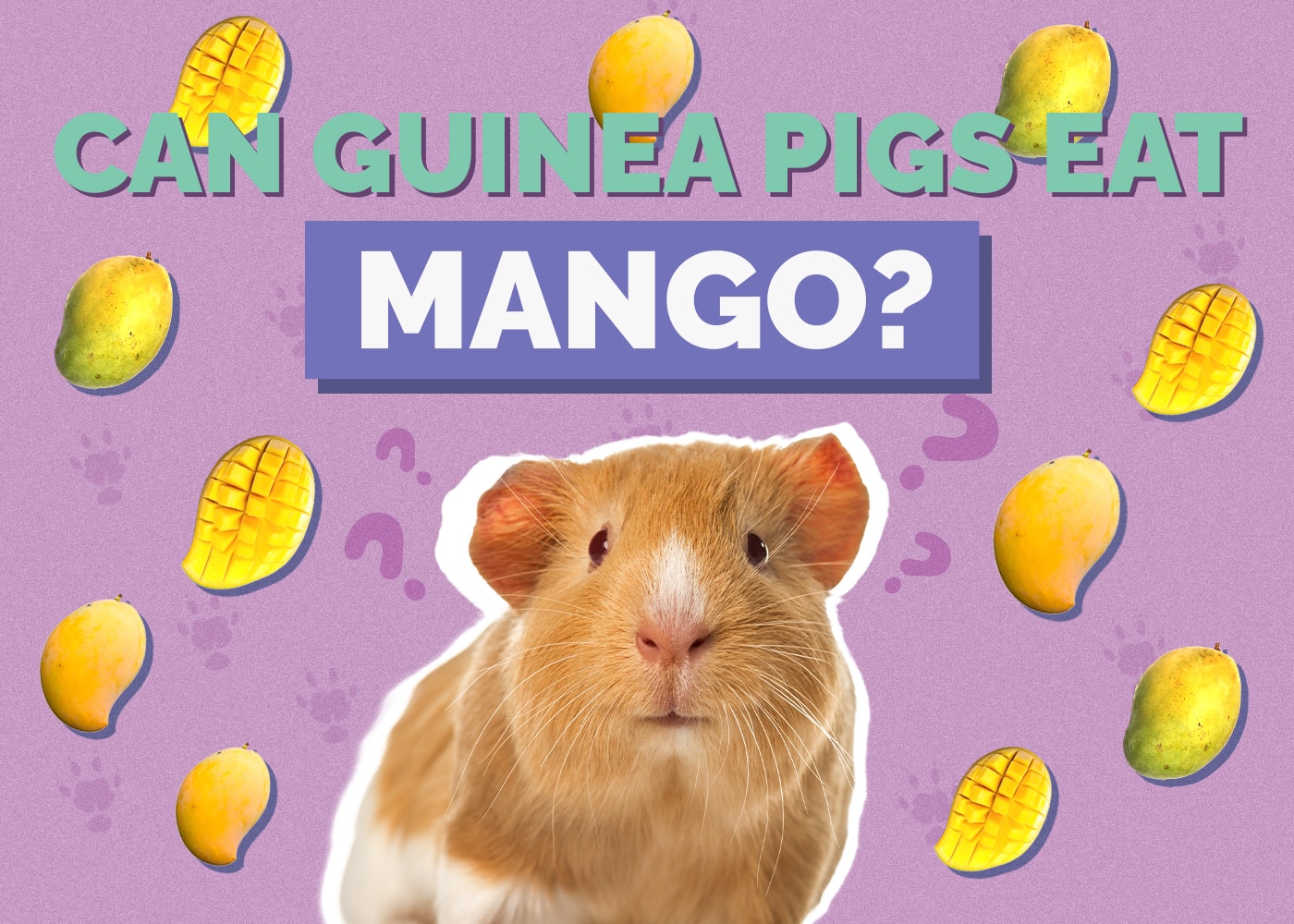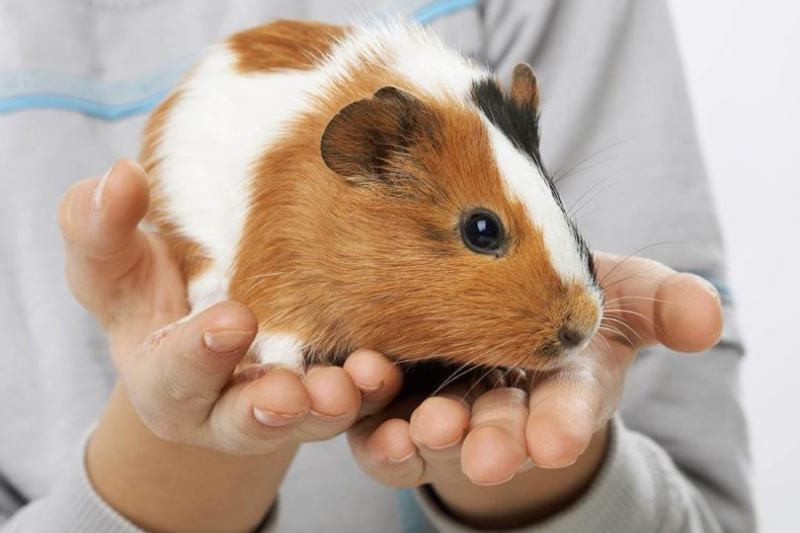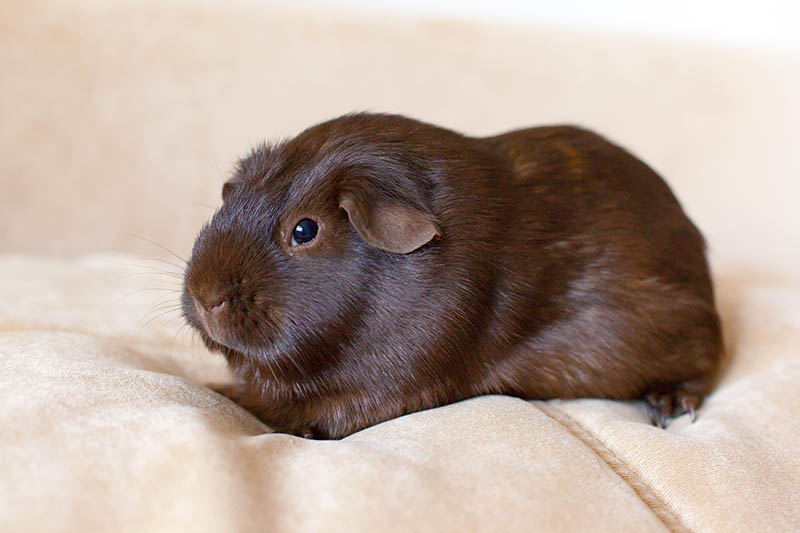18 Types of Guinea Pig Breeds (With Pictures)
Updated on
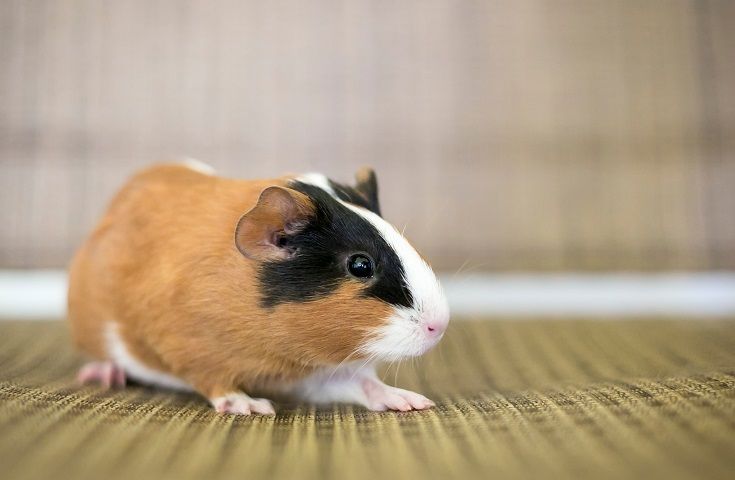
Guinea pigs can make the perfect pet for some families. They’re loveable, friendly, and sweet little critters to have around. If you’re considering adopting a piggy in the future, you’ll need to decide which type you’d like to welcome into your home.
The American Cavy Breeders Association recognizes just 13 different breeds, though many others exist. Keep reading to find 18 guinea pig breeds and learn what sets them apart from one another.
The 18 Types of Guinea Pig Breeds
1. Abyssinian
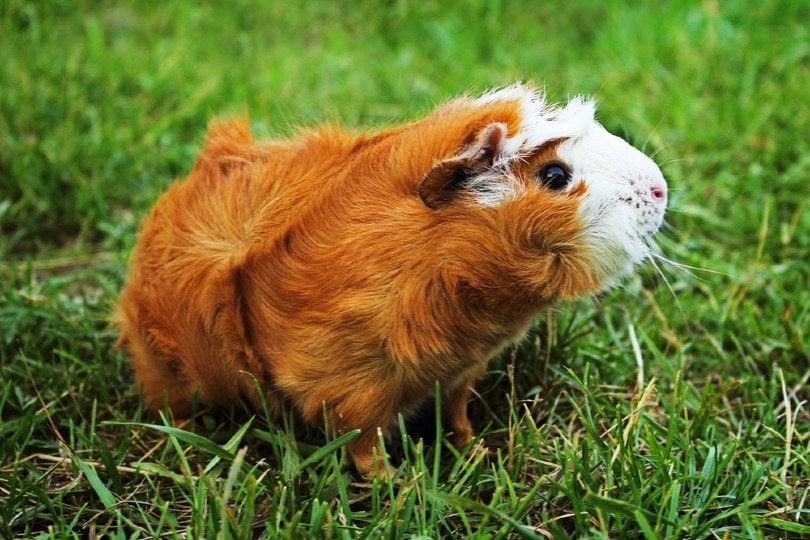
Abyssinian guinea pigs are one of the most affectionate and gentle breeds, making them a great pick for first-time piggy parents. They are easy to recognize thanks to their short, messy coat and cowlick-like patterning. Most Abyssinians will have anywhere between six to eight open swirls (also known as “rosettes”) spread evenly across their body.
Abyssinians also come in a “satin” variety with a satin sheen to their fur. Unfortunately, satin guinea pigs can suffer from mild to severe health conditions due to the genetic trait that causes the sheen in their coat. In addition, satin coats are linked to osteodystrophy, an incurable metabolic bone disease.1
2. Alpaca

Alpaca guinea pigs have a unique look with long, curly hair. Because of this, they’re sometimes mistaken for the Texel breed, but they are actually descended from the Peruvian guinea pig. Their coats are wavy and coarse, requiring daily brushing and detangling. They have a single rosette on the tops of their heads and will sometimes have them on their body, too.
3. American

American guinea pigs are among the most common types. If you’ve ever been in a pet store, chances are you’ve seen an American piggy there. This breed is easy to recognize thanks to its short, smooth coat that has a matte-like appearance. They don’t have rosette patterns but come in many different colors. In addition, their coats don’t require much grooming, so they’re easier to care for than other breeds.
Americans also come in the satin variety.
4. Baldwin
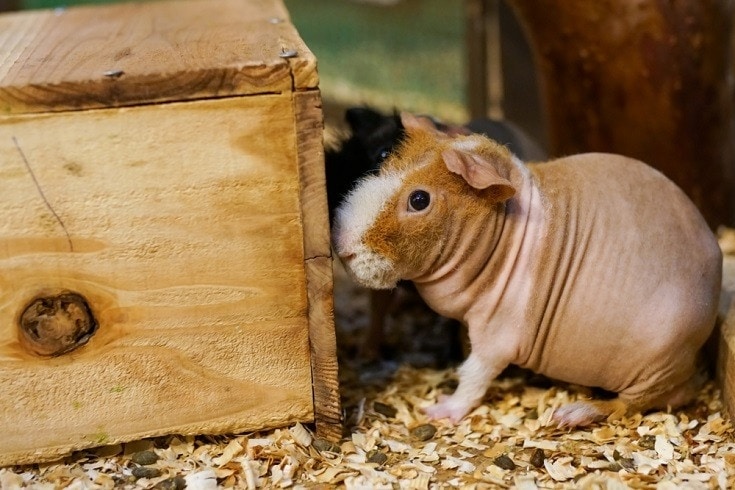
Hairless guinea pigs are perhaps the easiest to differentiate due to their lack of hair and plentiful wrinkles. The Baldwin is completely bald, save for some tufts on their feet. What’s interesting about this breed is that they’re born fully furred but will start losing their coat in just a few days.
Baldwin pigs have slightly different care requirements than their haired counterparts. For example, they may need to eat more to maintain optimal body heat and be kept out of the sun to prevent sunburn. You’ll also need to provide them with cozy nesting materials for heat conservation.
5. Coronet

Coronets are a long-haired guinea pig breed that is easy to identify thanks to its long, flowing coat. These beautiful piggies have a unique growth pattern that sees their long fur growing mostly backward, apart from a single rosette on the tops of their heads. As a result, their coats require regular grooming to prevent matting and tangles.
Coronets are known for their playful and affectionate temperament. They’re easy to handle, which is great because they require a fair amount of grooming.
6. English Crested

The English-crested guinea pig has short, straight, dense fur. Their most recognizable feature is the crest (or crown) on the top of their heads. This whorl of hair appears between the eyes and ears.
Unlike other guinea pig breeds, the English-crested can be shy and reserved around humans. They don’t typically take well to being picked up or petted.
7. Himalayan
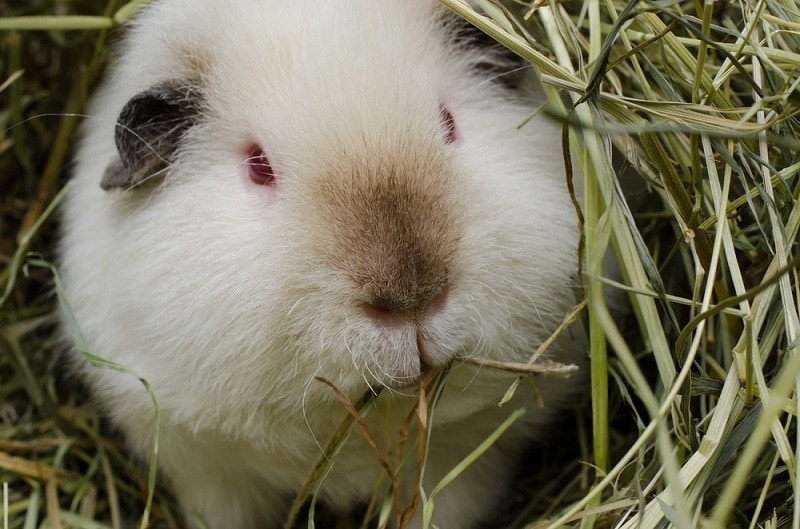
Himalayan guinea pigs are rarer than other breeds thanks to their albino makeup. These pigs have predominantly white coats with red or pink eyes. In addition, they can have brown or black coloring on their nose, ears, and feet. Himalayans are usually born completely white, with darker colored spots developing as they age.
Himalayans are recommended for guinea pig owners living in cooler climates without much sun. Their dark spots can fade when this breed is exposed to too much direct sunlight.
8. Lunkarya
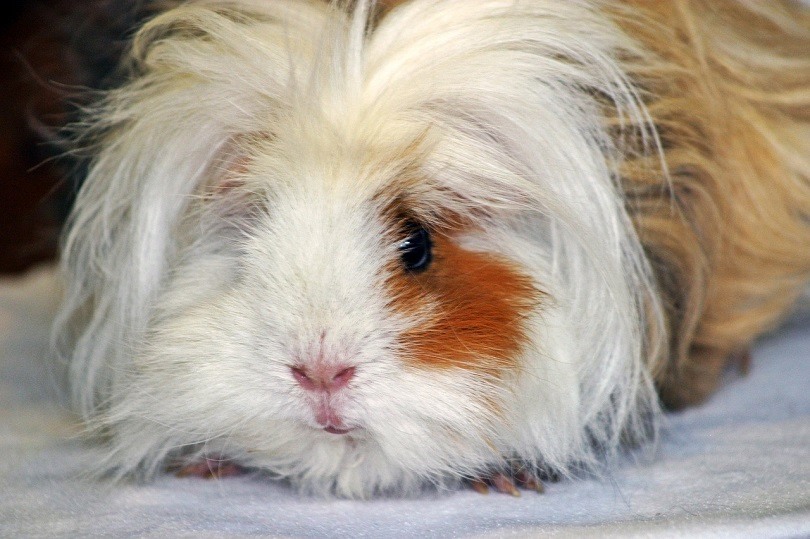
The Lunkarya guinea pig, sometimes known as the Lunk, has a coat you must see to believe. This pig is a variation of the Peruvian with long, thick, curly, sheep-like hair. If you think you know what a bad hair day is, you don’t know anything until you’ve seen a Lunkarya.
This breed can have different coat characteristics depending on its variation. Lunkarya Peruvians will have a long lock of hair on their foreheads. Lunkarya coronets will have a crest on their foreheads. Finally, the Lunkarya sheltie has waves to the hair on their backs.
9. Merino

Merino guinea pigs are known for their gentle and curious nature. These highly intelligent piggies look similar to the coronet, except their coats have a distinctive curl. Their forehead hair is shorted and crested. Some Merinos have longer, curlier hair than others, even going as far as looking like mini sheep.
Their curly coats require extra grooming to keep them tangle-free, but most won’t mind being held for their grooming sessions because they’re so affectionate.
10. Peruvian
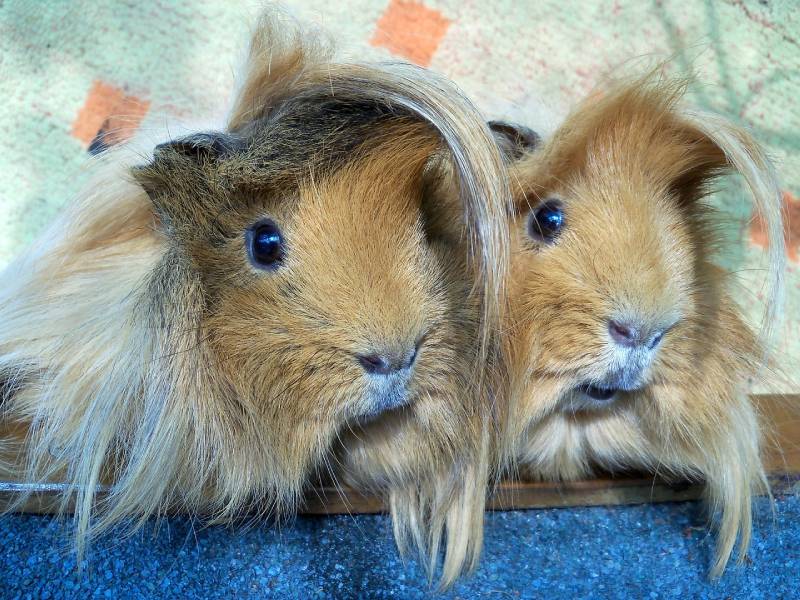
Peruvian guinea pigs are easy to identify thanks to their extremely long longs. Their soft, thick fur can even grow over its forehead, giving them an adorable fringe. Their coats can grow up to two feet, making this breed one of the most popular for owners that plan to show their guinea pigs. In fact, they were initially developed as show pigs.
These striking piggies are typically very pleasant and curious, thriving on the attention of their humans.
A Peruvian satin breed also exists.
11. Rex

Rex guinea pigs have short coats with a unique dense texture. Their fur is very coarse and almost woolly in texture because they don’t have guard hairs like most other mammals. In addition, the Rex has large, droopy ears, further adding to its cuteness quotient. They are the longest guinea pig breed, growing as long as 17 inches.
Their short coats require little maintenance, so this is a popular breed for families with children.
12. Sheba

Sheba guinea pigs aren’t quite a long-haired breed, as their coat errs on the medium-length spectrum. They were developed by cross-breeding Abyssinians with Peruvians. As you might imagine, mixing a piggy with messy, rosetted hair with a long-haired piggy sometimes means the Sheba has a permanently bad hair day. As a result, their coats are dense and require daily maintenance to keep them looking their best.
13. Silkie

Silkie guinea pigs, sometimes better known as Shelties, are long-haired with locks that grow back from its head. Their coats are very soft and silky and, despite being long, are relatively easy to groom. Silkies were developed in the 1970s from cross-breeding Peruvian and American guinea pigs. Like the Peruvian piggies in their heritage, the Silkie’s coat can grow 24 inches long.
Silkies can also come in a satin variety.
14. Skinny

Skinny guinea pigs, better known as skinny pigs, are almost entirely hairless, save for some on their muzzles, feet, and legs. Some have a very thin covering of fuzzy hairs on their backs. This hairless piggy is a great choice for people allergic to guinea pig hair or those with particularly busy lifestyles with little time to commit to coat grooming.
Like their Baldwin counterparts, skinny pigs must be kept away from the sun and provided with soft bedding that’s gentle for their skin.
15. Swiss

Swiss guinea pigs are one of the newest breeds and one of the rarest, too. As you may have guessed from its name, the breed originates in Switzerland. It was developed by breeding Rex with teddy piggies. Swiss pigs have short, dense coats with wavy and wispy hairs that stand on end. They’re so fluffy that it can sometimes be difficult to see their little feet.
16. Teddy
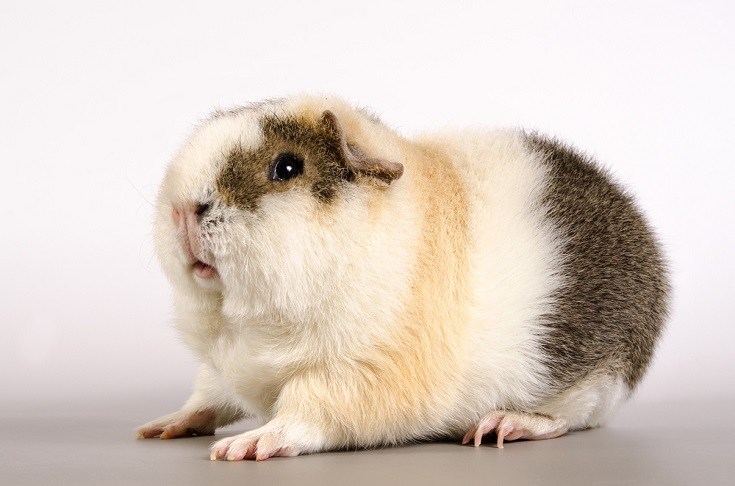
Teddy guinea pigs have fluffy coats and slightly upturned noses, giving them the teddy bear look for which they are named. They have short, dense coats that err on the wiry side at times. They’re relatively low maintenance, as far as grooming goes, and most are extremely friendly toward humans. Teddies come in a seemingly endless array of color options.
17. Texel
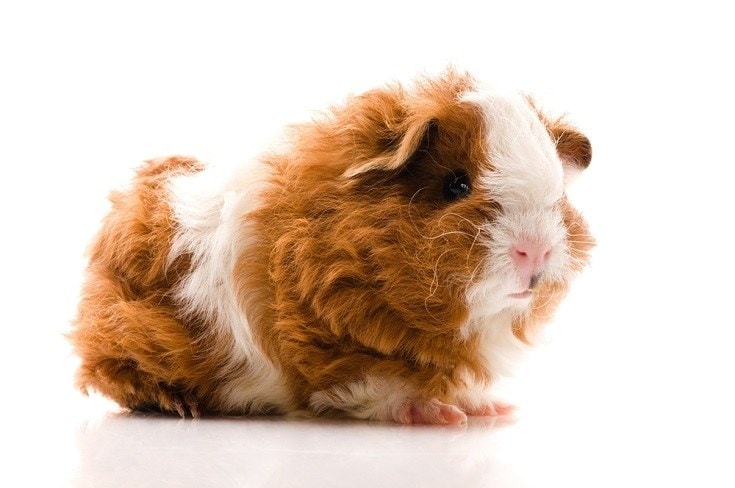
Texel guinea pigs have a springy, curly coat that can grow in ringlets. In addition, they tend to have wider and rounder heads than other breeds with facial hair that is typically shorter. Speaking of shorter, most Texel piggies are shorter in stature than other pigs. Texels were developed in the 1980s from cross-breeding Rex and silkie guinea pigs.
Texels are considered one of the most docile breeds with streaks of boldness and curiosity.
18. White-Crested
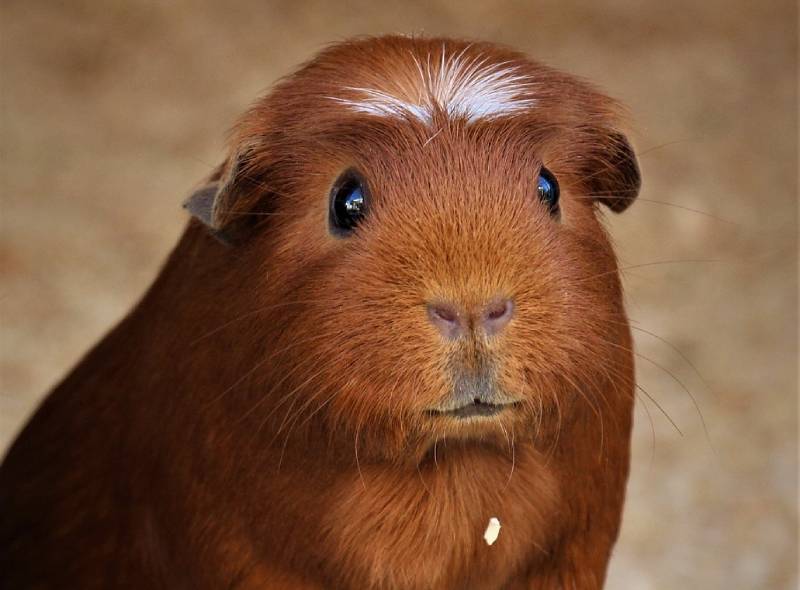
White-crested guinea pigs (sometimes also known as American crested guinea pigs) have two-toned coloring with solid bodies and a white rosette atop their heads. They come in many different coat patterns, including brindle, agouti, and other patterns that don’t have large quantities of white.
This breed can be slightly aloof and shy than other guinea pigs, but they may warm up to their humans over time.
Final Thoughts
As you can see, there is no shortage of guinea pig breeds. However, most piggies have very similar personality traits, so it may come down to you choosing the piggy you prefer the appearance of. Remember, certain breeds require much more grooming than others (we’re looking at you, silkies!), so consider how much spare time you have every day to commit to brushing and detangling before you land on a breed to adopt.
See Also:
Featured Image Credit: Mary Swift, Shutterstock

